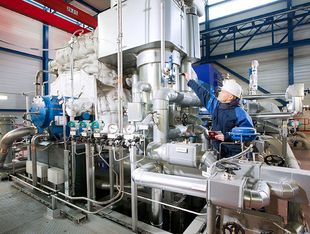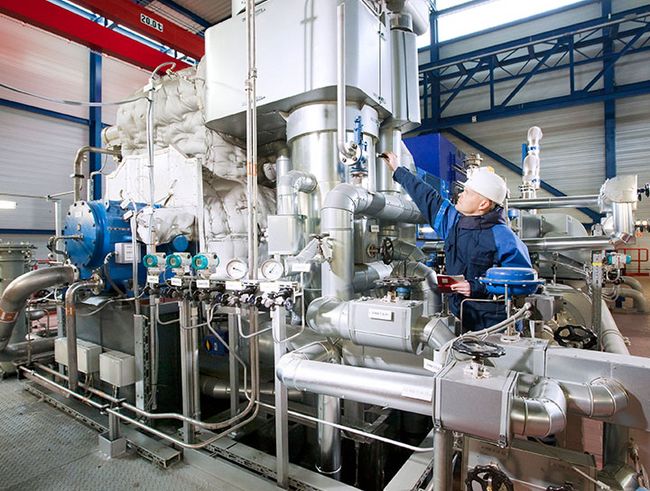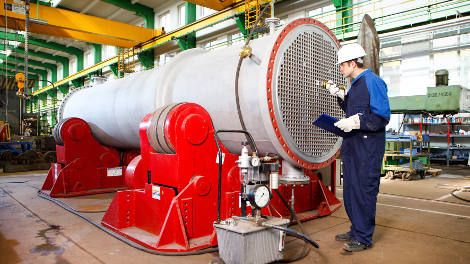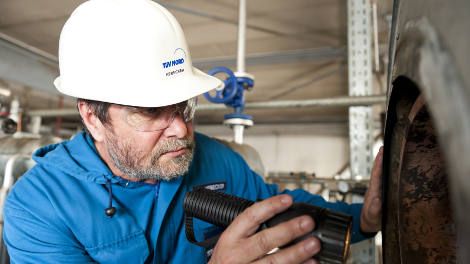Systematic maintenance




Inspections and maintenance are a cost burden on any industrial facility.
We support our partners in Germany and abroad with risk-based inspection plans for static equipment in order to optimise their plants.
For dynamic equipment, reliability-centred maintenance (RCM) is used, which can produce low-cost maintenance plans for the dynamic equipment.
The result: The productivity of plants increases, the downtime – and hence the cost – decreases.
Our Services
- We perform risk-based inspections with our own software, inspect pressure equipment and piping, and determine inspection intervals.
- We advise you in implementing Reliability Centered Maintenance (RCM).
- We create master plans, for example, for organisations that comply with all relevant laws and for asset management.
Unnecessary inspections and overloaded components
A team of TÜV NORD experts was at work in Abu Dhabi for three years, in order to inspect a complex gas purification and liquefaction plant. The customer contract: To assess the risk for all components and pipelines in the premises on the Persian Gulf. How and why they could fail – and most importantly: when? A risk-based inspection together with the RCM was intended to clarify the issue of how much downtime could be expected in future plant operations, and what counter-measures could prevent this.
The RBI inspection method is used in pressure equipment, piping, tanks, boilers, and various control and safety valves used. For active components such as turbines, pumps, compressors, and control centres, RCM is used.
The situation is almost always the same in industrial plants. What tend to be "uncritical" equipment and apparatuses are inspected too often, while heavily used components are kept running as long as possible to reduce cost levels – meaning an unexpected failure of the system is only a matter of time. What should be done to avoid downtime and at the same time reduce costs? Questions that need to be clarified: Where are the weak points? Which areas are technically at risk? Are there any custom solutions for maintenance and inspections? Which software-based maintenance systems can be put to increased use to reduce costs? The result of the RBI and RCM-based studies is a strategy, following the implementation of which the operating risks are reduced and the reliability of a plant can be sustainably increased.
Similar recommendations were also submitted to the company in the Middle East along the way. If they are implemented, the natural gas plant will be more productive and a safer place to work in future – with less downtime.

